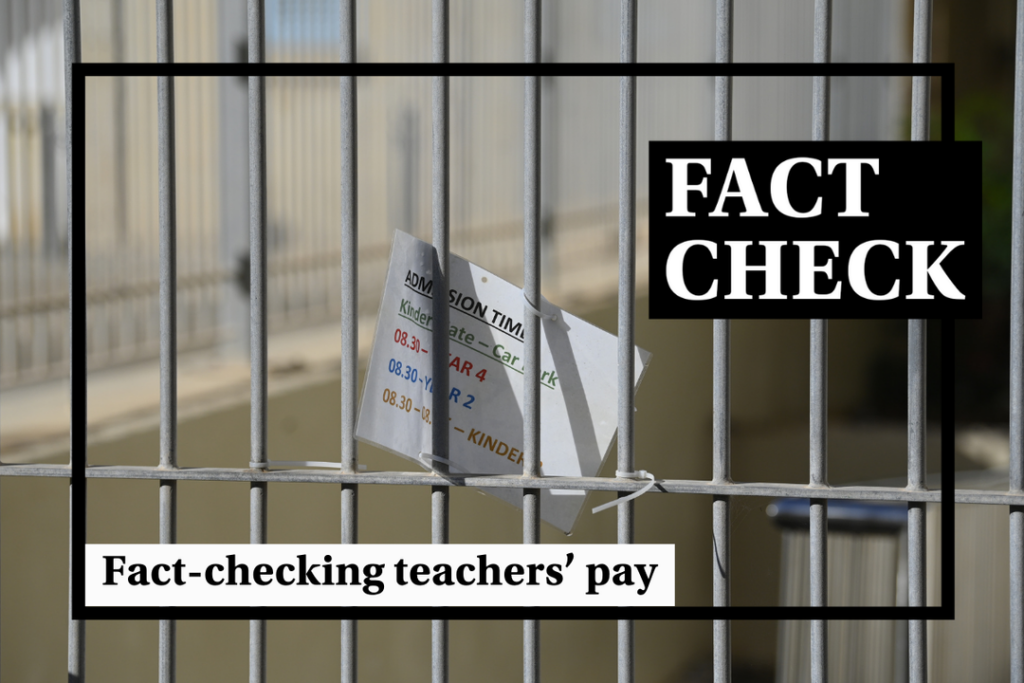An ongoing dispute over teachers’ wages led to a nationwide strike on Monday 27 November, after the teachers’ union turned down a government proposal for better salaries.
A staggering 97% of educators took part in the strike, grinding Malta’s schools to a halt on the day.
Support for the strike has been widespread, but public debate over the issue has also been rife with often conflicting speculation over how much teachers currently earn.
On Sunday, opposition leader Bernard Grech told party supporters that most educators “earn between €18,000 and €24,000 a year”. Meanwhile, commenters on social media have been busy speculating over the exact earnings of teachers, often presenting confusing or conflicting figures.
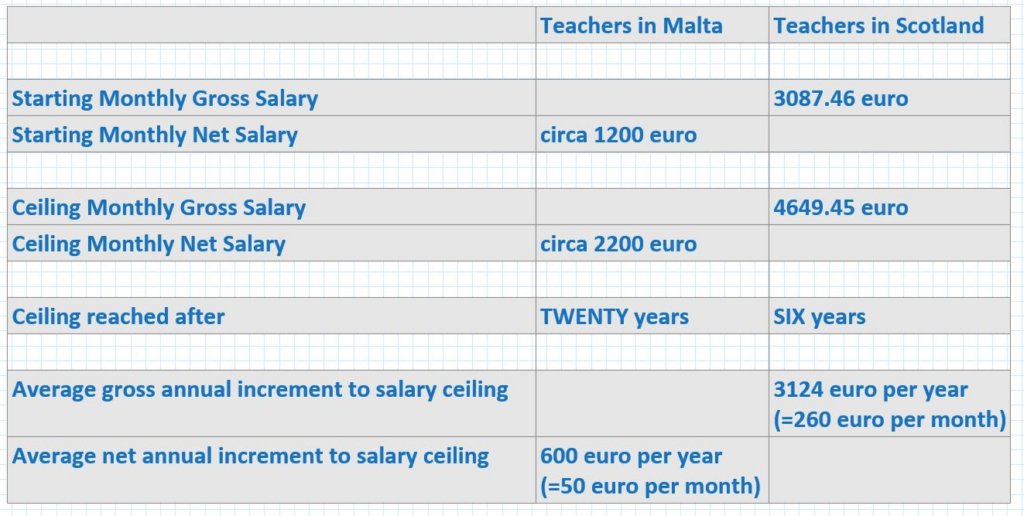
So, how much is a teacher’s wage?
The first port of call to understand how much teachers earn is the collective agreement signed between the Ministry of Education and the Malta Union of Teachers (MUT) back in 2017 which spans until 2024.
It says that a teacher’s starting salary is pegged to the lowest step of salary scale 9. Each salary scale consists of various incremental stepped increases, each one slightly bumping up a person’s salary.
This year, the basic salary for the lowest step on salary scale 9 is just over €24,000. The highest step on the salary scale is roughly €2,500 higher, at almost €27,000.
Times of Malta is reliably informed that, in real terms, the basic gross salary for a new teacher in 2023 was of €24,495.
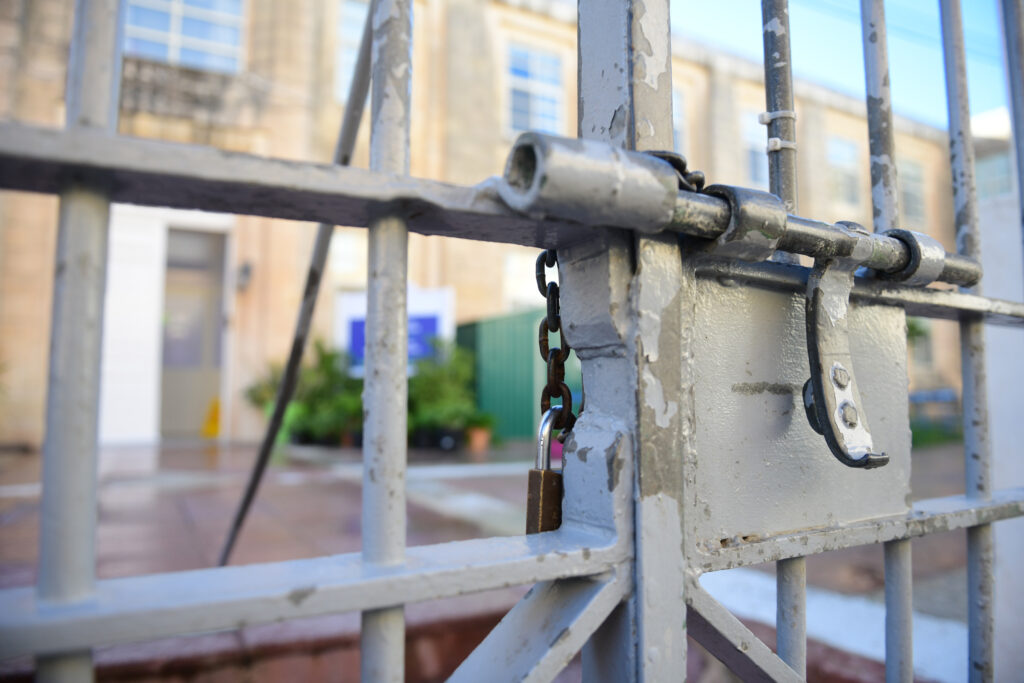
Teachers’ basic salaries are also supplemented by annual allowances and allocations for work resources, helping them to buy materials that are necessary to carry out their job.
However, unlike the basic pay, these allowances do not count towards a person’s pension pot.
Figures published by MUT back in 2017, around the time when the collective agreement was being finalised, shed some light on how allowances for teachers work. The table shows that, at the time, allowances started at just €600 for those on the lowest step, rising to €3,000 for those on the highest.
The allowances for a teacher at the lowest step of the scale this year currently amount to €3,000 per year.
In practice, this means that a teacher’s starting salary this year is of €27,495, once all allowances are taken into account. However, that figure is inclusive of income tax that must be paid.
Once taxes are deducted, the take-home pay of a teacher on a starting salary is roughly €1,750 per month.
This can be easily verified by looking at a recent job vacancy for a teacher issued by the government. A vacancy for primary and secondary school teachers published in April this year lists the salary as €24,494, together with a total of €3,000 in allowances.
Teachers, like many other public sector workers, may also receive an annual qualification allowance, with the amount varying according to their highest level of education. In 2021, this ranged from €349 for teachers with a diploma to €932 for those with a doctorate.
Do teachers always remain on salary scale 9?
No, the same collective agreement says that teachers climb to scale 8 after eight years of work and later to scale 7 after a further eight years.
Teachers can speed this up by carrying out training and other professional development throughout the years, earning themselves a salary scale jump after six years, instead of eight.
This means that if we take the case of a teacher who has been in the job for at least 16 years and worked their way up to the maximum possible pay scale, they would have earned a basic gross salary of some €30,500 this year, in addition to their allowances.
A recent report published by Euridyce, the European Commission’s education research network found that, on average, it takes a teacher an average of 19 years to reach the top of their pay range. This places Malta at the lower end of the table, with only teachers in Denmark, Norway and the Netherlands getting there more quickly.
However, the report also describes the difference in salary between teachers at the lower and higher ends of the pay scale in Malta as “modest”, highlighting how teachers in several other countries see higher increases.
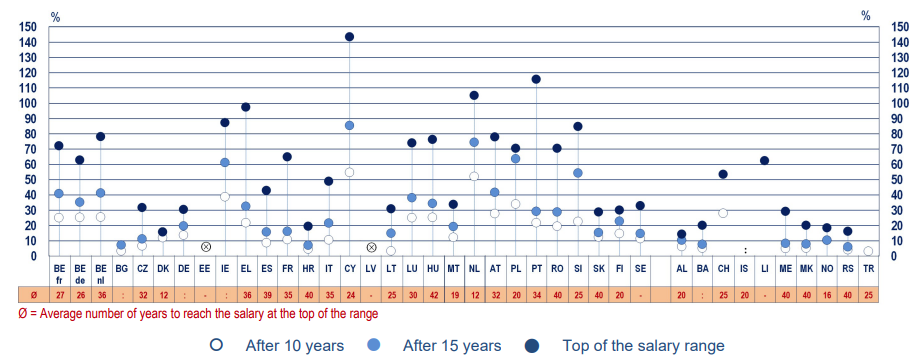
Do all educators earn this amount?
Not quite. Several other educators, such as learning support educators (LSEs) and kindergarten teachers, earn a fair bit less, while heads of schools are on a higher pay scale.
The lowest-ranking kindergarten teachers and LSEs can earn as little as €16,200 as a gross basic salary, while those in higher ranks have a basic pay that starts from over €22,600. Those at the highest step of their salary scale have a salary that starts at just over €25,000.
Like teachers, kindergarten teachers and LSEs also have their salaries topped up with additional allowances. In 2021, these ranged from a minimum of just under €2,000 per year to a maximum of almost €2,500.
Meanwhile, a head of school will have earned a starting gross salary of almost €31,000 this year, excluding allowances, with an assistant head of school at just under €29,000.
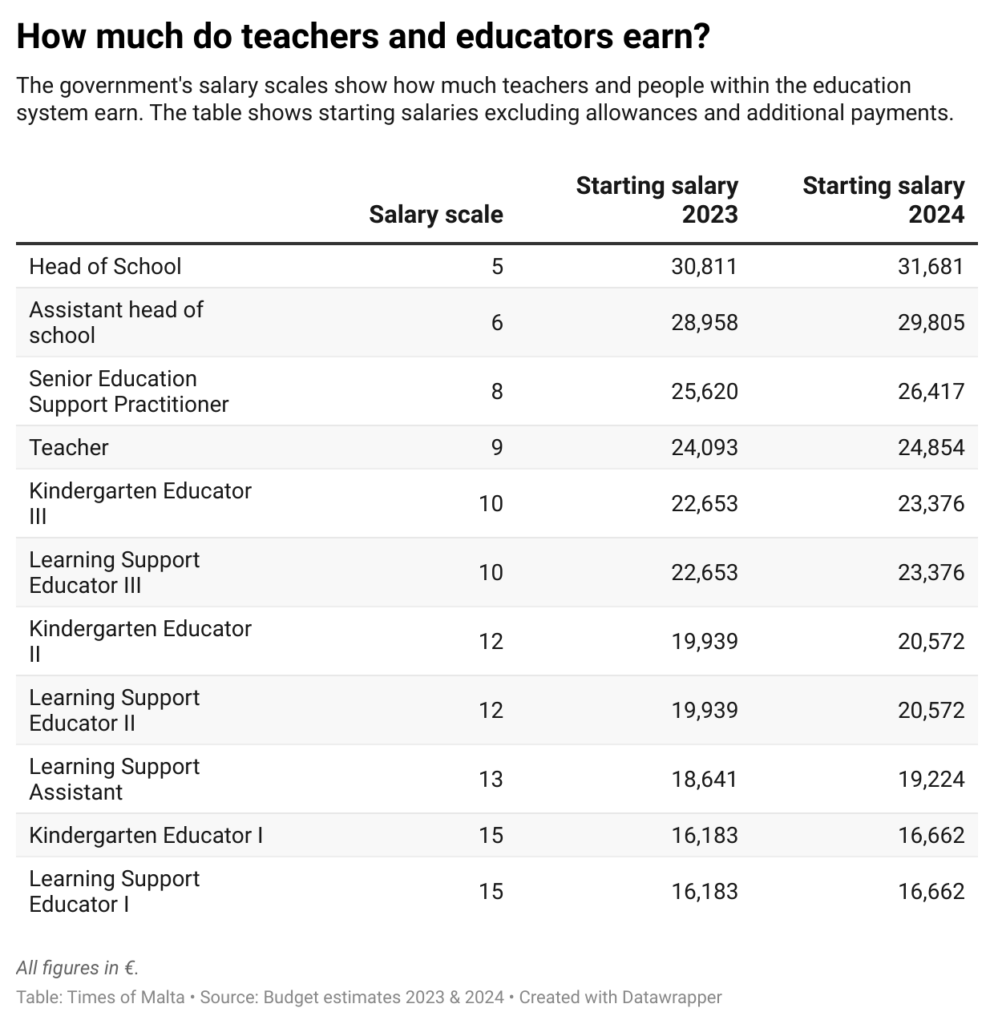
How many teachers are there?
The latest available data suggests that there were roughly 7,700 teachers in pre-primary, primary and secondary education during the 2021-22 scholastic year.
In addition to this, there were roughly 4,500 teacher aides employed during the same year. These include LSEs, but also other staff members who provide teaching or technical support.
What are the increases that teachers are asking for?
MUT and government officials are remaining tight-lipped as negotiations are underway, so we are still in the dark when it comes to negotiations.
“Both parties do not disclose figures until there is a basis of an agreement. Otherwise the process would become a public discussion and not agreement negotiations”, MUT president Marco Bonnici told Times of Malta.
However, several teachers have also expressed their concerns over other issues, such as their future prospects in the job and the government’s practice of employing non-qualified teachers.
Verdict
The basic gross salary of a newly qualified teacher was a little over €24,000 this year. This is topped up by various allowances that mean that the lowest earnings for a teacher amount to around €27,500 in total. This amounts to around €1,750 per month in take-home pay, after taxes are deducted.
Teachers can move to a higher salary scale after eight years and then again after another eight years, although this can be sped up to six years under certain circumstances. Ultimately, teachers could earn up to €30,500 gross this year, excluding allowances.
Several other educators, including LSEs and kindergarten teachers earn a basic salary starting from as little as €16,200 if they are at the lowest salary rung, rising to as much as €25,000 on the higher end of the scale.
Like teachers, LSEs and kindergarten teachers also have their basic salaries topped up by allowances.
The Times of Malta fact-checking service forms part of the Mediterranean Digital Media Observatory (MedDMO) and the European Digital Media Observatory (EDMO), an independent observatory with hubs across all 27 EU member states that is funded by the EU’s Digital Europe programme. Fact-checks are based on our code of principles.
Let us know what you would like us to fact-check, understand our ratings system or see our answers to Frequently Asked Questions about the service.

